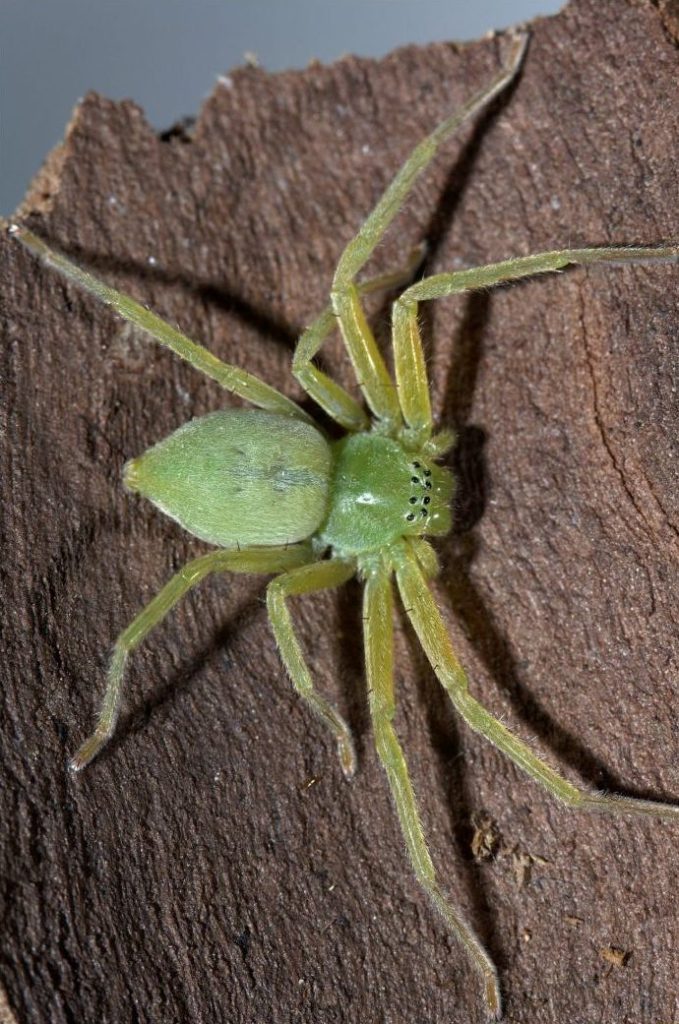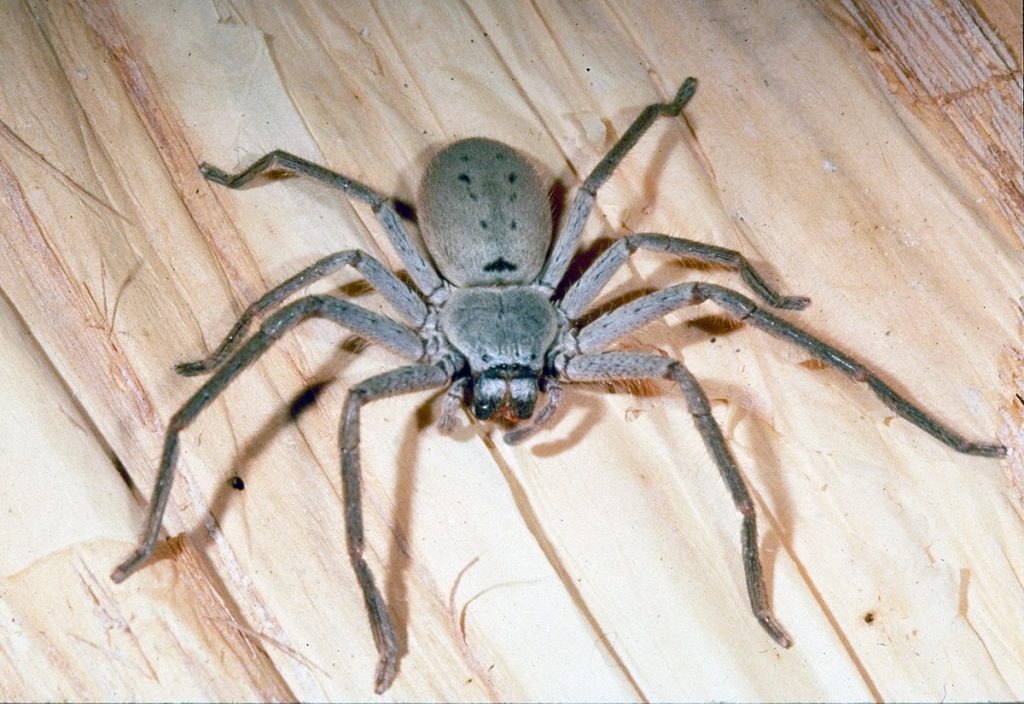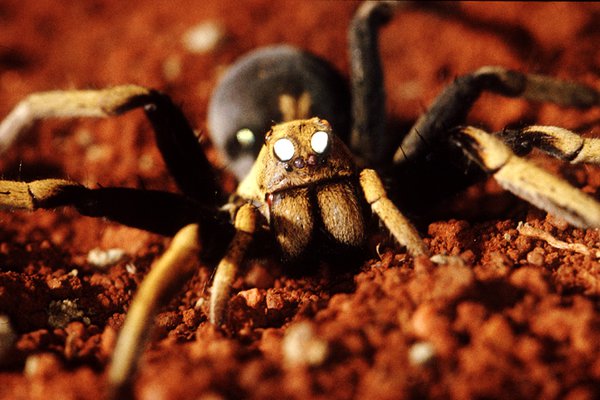At our meeting in April, we were treated to the most fascinating presentation on HuntsmanSpiders.Our speaker was Helen Smith, an arachnologist with the Australian Museum Research Institute, Sydney.
Helen’s presentation was illustrated with many images of the various species of Huntsman spiders. She explained that an understanding of the nature of these arachnids helps to take away the fear of them. The natural reaction of most people to the sudden appearance of a Huntsman is surprise or fear, because of their scuttling type of movement and the fact that most spiders can bite.
Huntsman spiders belong to the family Sparassidae. They are large and long-legged, mostly grey or brown, sometimes with banded legs. Many species have rather flattened bodies, adapted for living in narrow spaces, i.e. in rock crevices or under bark. This is aided by their hairy legs, which, instead of bending vertically in relation to the body, have the joints twisted so that they spread out forwards and laterally in crab-like fashion. However, a few species have a burrow, with a cap. Thereare 143 species in Australia, of which 12 are found in the Sydney region. Helen’s projected images included species in the genera Heteropoda, Delena, Isopoda, Halconia, Pediana and there were descriptions four other genera.Baby spiders hatch from an egg, after two weeks to a month in development. A mother Huntsman is protective of her young, but she can be cannibalistic to other species of Huntsman. Adults have a lifespan of about two years, but those kept as pets are recorded as living for five years.
In the Sydney region there are two subfamilies (Heteropodinae and Deleninae), contain ingnine genera. All the species are fast and active predators and although their main prey is insects, they have been recorded as catching animals many times their size, e.g. mice, lizards and toads and pygmy possums ! Their common tendency to suddenly appear from a hiding place and to scuttle rapidly across a surface, horizontal or vertical is more frightening than the fear of their bite. The vibration of a car is known to bring a Huntsman out of hiding and often on to the wind screen! Although usually fairly solitary,dozens of members of the social species, Delena cancerides, can be seen sitting together under bark or rocks.



Like all arthropods, Huntsman spiders undergo moults. The process usually takes less than ten minutes and occurs all through the animal’s life. We saw fascinating images of the moulting process with several species of this spider.
Although these spiders are efficient hunters, they are predated by many other animals, such as birds, small mammals, spider wasps, mermithid worms and a pathogenic fungus. We were presented with macabre images of the death of Huntsman spiders, from parasitizing wasps, worms growing inside the spider’s body and white fungal mycelium and hyphae growing out of the spider’s joints. The story of the mermithid worm’s ability to colonise the spider and make it seek liquid for the worm’s next life was told to us by Helen. A detailed description can be found under the title ”The Worm, the Spider and the Coffee Cup…ABC website. (1995).
Helen’s instructions on how to catch….and release…a Huntsman.. were as follows. Slowly place a large clear container over the spider and slip a firm sheet of plastic or similar, along the surface on which the spider is sitting. Slow movement is of the essence ! Then, please release in the garden and don’t kill.
Helen’s presentation gave us an insight into the world of the Huntsman. I am sure that we all had a less fearful attitude toward these spiders and a respect for them as important members of the ecosystems in which they live.
